What do you do when a building important to your city’s history is inaccessible? When you can see it, but simply cannot get anywhere near it? This is the question facing the Ledra Palace Hotel in Nicosia, the capital of Cyprus and one of the last few divided cities in the world. One group of researchers seems to have found a solution, using cutting edge tech.
By Fergus O’Sullivan
Up until the Turkish invasion in 1974, the Ledra Palace Hotel served as a social hub for the elite of Nicosia. It hosted countless receptions, gatherings and other events for the many communities present on the island: Greek Cypriots, Turkish Cypriots, Armenians and British, they all used to mingle underneath the chandelier in the main ballroom. It also hosted scores of foreign dignitaries and their entourages.
A fascinating location to be sure, but if you try to visit it now, you’ll run into barbed wire. When the ceasefire was declared between the invading Turkish army and the Republic of Cyprus, the Ledra Palace found itself firmly in the UN buffer zone meant to keep the peace between the two sides.
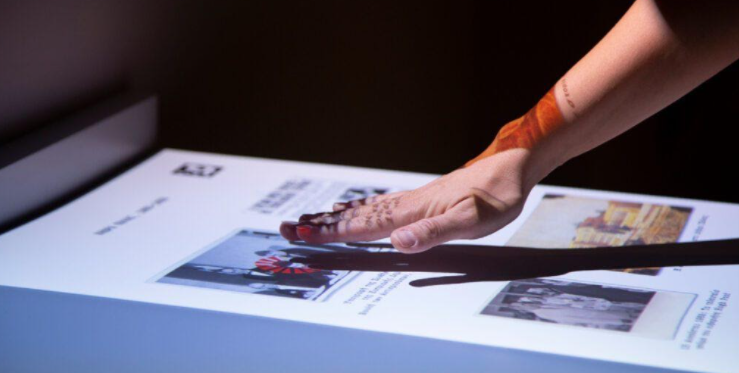
Images can tell a story as well as text can. Image courtesy of CYENS.
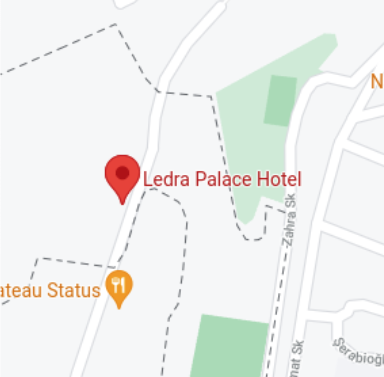
The closest you can come to the hotel now is as you pass by it when traveling between the checkpoints, one on either side, that divide the island. There’s no time to take a tour, either: the area is used as a British army barracks and there’s a firm “no dawdling” policy.
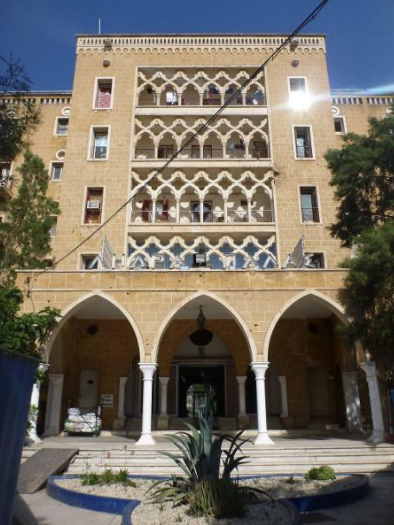
Ledra Palace: Dancing on the Line
Cut off from the world, the story of the Ledra Palace could be written off as just another lost piece of history like so many others. However, a team of researchers from the CYENS Centre of Excellence and the Leventis Municipal Museum of Nicosia have put together an exhibition that has brought the hotel back to life in its former glory. Instead of bricks and mortar, though, they’re using bits and bytes.
Named Ledra Palace: Dancing on the Line, the exhibit has done away with the serried ranks of glass cases you might expect. Instead, it uses its allocated space on the top floor of the museum to place a wide selection of technological gadgets, ranging from a very large screen, to an interactive table and virtual-reality headsets.
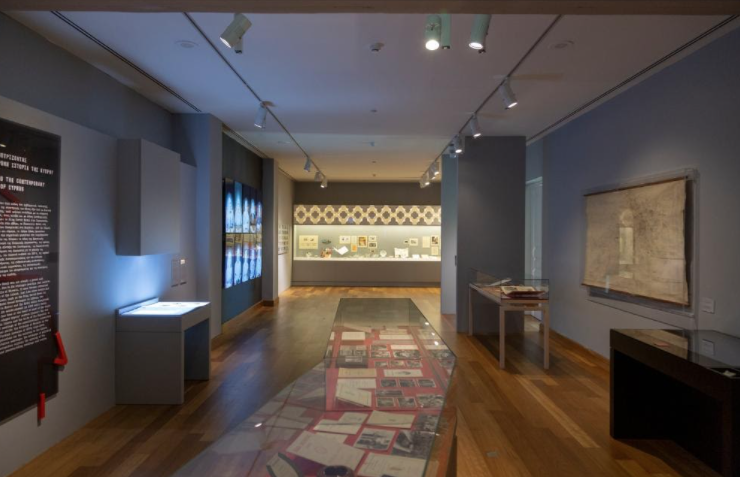
The view of the more conventional part of the exhibition. Image courtesy of CYENS.
Each of these installations has as its goal to tell a story, either that of an object associated with the hotel, or that of a person who worked or lived there. The resulting narrative isn’t just about the Ledra Palace, either, but also offers a glimpse of a Cyprus where its two largest communities lived together in relative harmony.
The need for this is quite simple: according to Antigone Heraclidou, one of the three curators of the exhibition, “modern Cyprus history is not a vital part of history class in schools.” As such, a narrative has developed on either side of the line that portrays the other as the enemy and has pretty much wiped out any memory of an undivided Cyprus.
We talk about this in detail in our article on how Cyprus was divided.
As Dr. Heraclidou ruefully admits, no one exhibition will remedy decades of ethnic tension and venomous propaganda, but she, the research team as well as CYENS technical arm, headed by Kleanthis Neokleous, have made a solid effort.
The Exhibition
Not the simplest of tasks, but the team behind the exhibition came up with some amazing installations. The biggest one, which serves as the eyecatcher, is a large wall divided into ten screens, each of which features one person explaining the effect the Ledra Palace has had on their life.
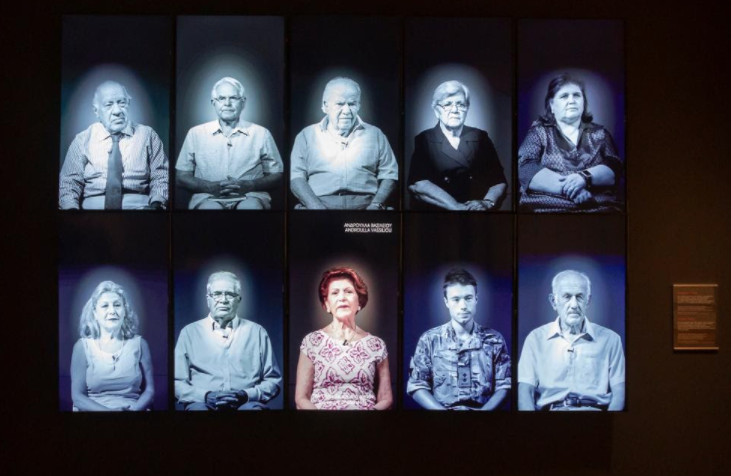
These range from a British soldier who used the hotel as his HQ while patrolling the buffer zone, to a Cypriot national guardsman who was part of the battle surrounding the hotel in 1974. Also featured are the wife of the man who managed it, as well as her daughter, who is now one of the people in charge of the project.
The story is told organically, with one interviewee telling one part of their story, then another taking on that thread before passing the torch to another. Though all eight interviews were conducted separately, whomever did the editing of these videos did a stellar job. It really brings home the importance a building can have to a community and sets the right mood for visitors.
Dr Heraclidou, though, has one regret when it comes to the videos: there are no Turkish Cypriots being interviewed. Apparently there was one veteran of the fighting in ‘74 who initially was interested in being part of the project, but the team wasn’t able to make it to his side of the zone thanks to the pandemic lockdown. Eventually, the man changed his mind, leaving visitors without a Turkish Cypriot voice on the wall.
Immersive Technology
However, as impressive as the wall is, it’s the other installations that make the exhibit truly immersive. First is an interactive book which tells the story of recent Cypriot history through images and video, though there’s some text when necessary to explain complicated parts.
The team chose to go with an actual book here, even made of paper, and then project the content from above. It’s a pretty nifty way of doing this, and gives visitors a great understanding of the history.
Going light on text was a conscious choice by the team: the aim of the exhibit is to be non-authoritative, to let visitors make up their own mind about Cypriot history. Overexplaining images would run contrary to that. Instead, the pictures of Turkish and Greek Cypriots enjoying events together tell their own story, of a much more inclusive society.
The book takes a novel approach to an old concept, but the next installation takes it even a step further. Where most museums would have you simply walk past a glass case containing objects, this exhibit lets you interact with them directly, or at least with replicas.
While the exhibit does have a conventional display of objects retrieved from the Ledra Palace — though less than you think as the hotel was heavily looted during and after the invasion — the team has picked five objects that tell a deeper story. These include the key to room 105 of the hotel, an ashtray and a book.
Source:
Guild, H. (2021, November 3). How a Cyprus Museum Uses Tech to Make the Past Come Alive. History Guild.

